For more than 10 years now, you can combine the pleasures of hiking and eating on the annual Culinary St Jacobs Way in Tyrol in Austria. I was lucky enough to get invited by the Austrian Tourism Board to join them for the 2018 edition.
Below, you can read my report about that experience.
In 2021, the Culinary St Jacobs Way runs from July 7 until the start of October. It is led by internationally renowned chef Eckart Witzigmann. He’s one of only four chefs so far who’ve been rewarded with Gault Millau’s “Chef of the Century” award.
The five chefs who’ll be preparing dishes for this years event are:
- James Knappett (UK)
- Jean-Georges Klein (France)
- Onno Kokmeijer (Netherlands)
- Tristan Brandt (Germany)
- Paul Ivić (Austria)
Curious what this is all about? Read on!
Contents
The Culinary St Jacobs Way: the concept
The Culinary St Jacobs Way consists out of five different hikes to five different huts in the Paznaun-Ischgl region in Tyrol, Austria. What makes the concept complete is that for each of these huts, a renowned chef creates a twist on a typical Tyrolian hut dish that is served all-summer-long at normal hut food prices. On top of that, all dishes are prepared with locally-sourced ingredients.
The idea is to create award-winning cuisine outdoors by using local products and without losing that cozy ambiance the Austrian mountain huts are known for.
While you can hike the paths of the trail outside of the summer months as well, you can only do them in combination with the special dishes from July until mid or end of September (depending on the hut). So if you’re looking for something special to do in Austria in summer, this is it.
The Culinary St Jacobs Way is organized by the local tourism boards of Paznaun-Ischgl under the patronage of the Austrian 3 Michelin-star and Gault & Millau “Chef of the Century” Eckart Witzigmann. The Tyrolean chef Martin Sieberer, good for 3 Gault & Millau hats and 18 points, coordinates the work of the top chefs. As the head of the Paznaunerstube restaurant of the Hotel Trofana Royal in Ischgl and one of the most decorated chefs in Austria, he’s the perfect man for the job.
Good to know:
The international chefs are only present during the opening weekend and during a special event on August 19 (more on that below). The rest of the summer, their dishes are prepared by the local teams of the huts. Each of the huts also has a brochure which holds the recipes for the five dishes, so you can have your go at the one you liked best when you get back home.
How to hike the Culinary St Jacobs Way
While the hikes that are part of the Culinary St Jacobs Way are all located in the same region and all take only about two hours, it’s not possible to do them all in one day. You could combine two in a day, but the ideal thing to do is to do one of the hikes in the morning, have lunch at the hut and then keep the other hikes for other days.
That way, you can build a week-long vacation around these culinary hikes.
(Oh, and here’s another itinerary for a week in Austria!)
If that sounds like a plan, you can get a stamp card at the local tourist office in Ischgl, several hotels or at the huts themselves and have it stamped each time you reach a different hut. People who make it to all five huts in one summer can turn in their card for a chance to win a Culinary St Jacobs holiday for the next summer.
Pretty cool, right?
Also good to know is that there are special signs pointing the way for the “Kulinarisches Jakobs Weg” during the course of the summer, so really all you need to find is the starting point and you’re good to go.
The different hikes
1. To the Friedrichshafener Hütte in Valzur
The hike
The hike up to the Friedrichshafener Hütte at 2151 meters is considered a moderately difficult one. While the trail doesn’t provide too many obstacles, it does go up quite steeply so it’s best to stretch when you arrive after about two hours.
The trail is one to hike one-behind-the-other and mostly swirls upwards through the woods. The last bit opens up, offering some great views.
If you’re not in the best shape or just aren’t feeling it that day, there’s also a gravel road that starts at the same point as the hike and that you can follow all the way to the hut. Our little group hiked up via the trail and then down via the road. I’d recommend doing it that way is hiking down is harder and it would be a shame to miss the more open views from the road.
The food
By: 3-star chef Heinz Winkler from Germany
Winkler’s idea is that food needs to inspire, not inflate. He aims to create a kitchen of vitality by refining old recipes and using a lot of fresh herbs. He’s currently the owner and chef of the 5-star Hotel Residenz Heinz Winkler in Aschau in Chiemgau, Germany.
And his dish? A rather classic Kaiserschmarrn served with applesauce, plums or a berry jam. The twist? There might be quite a bit of rum in the raisins that are sprinkled throughout the Kaiserschmarrn.
2. To the Ascherhütte in See
The hike
There are two starting points to the hike to the Ascherhütte. You can either start down in the center of See or take the See cable car up to the Medrig Alp middle station. From there, it’s about a two-hour hike. That’s also the option we went with, so I can’t comment on what the hike is like if you start from See but it supposedly takes four hours.
This hike is categorized as being of moderate difficulty but I found it a bit easier and pleasant than the one to the Friedrichshafener Hütte in that I had less the feeling of just climbing up stairs. The views are more open and the trail brought out the child in me again as I really had to watch where I put my feet.
I’m sure everyone has played that game where you can’t touch the ground when they were young, right? :-)
The food
By: 1-star Arabelle Meirlaen from Belgium
Yaay, a Belgian chef! I might be biased, but Arabelle Meirlaen stands out. While lots of younger chefs nowadays focus on working with locally-sourced ingredients, Meirlaen goes a step further and truly sees food as part of human well-being – not just in the sense of “Yum, this is tasty”, but in the sense that her creations are meant to nourish us and make us feel better, so that we leave her restaurant in Marchin re-energized and not feeling stuffed.
I had the opportunity to talk to her for a while during the opening weekend of the Culinary St Jacobs Way and was struck by her low-key passion. Meirlaen wants to help people through food and share her vision one person at a time. It’s clear that she won’t easily step into the spotlight herself, but she surely deserves to.
As for her dish? Meirlaen cooks entirely gluten- and lactose-free and that wasn’t any different in Ischgl. Her dish consists of lentils with corn-fed chicken, herbs and a tiny bit of raspberry coulis. It was filling without being heavy, energizing without any use of sugar. And I’d love to visit her restaurant here in Belgium someday.
3. To the Jamtalhütte in Galtür
The hike
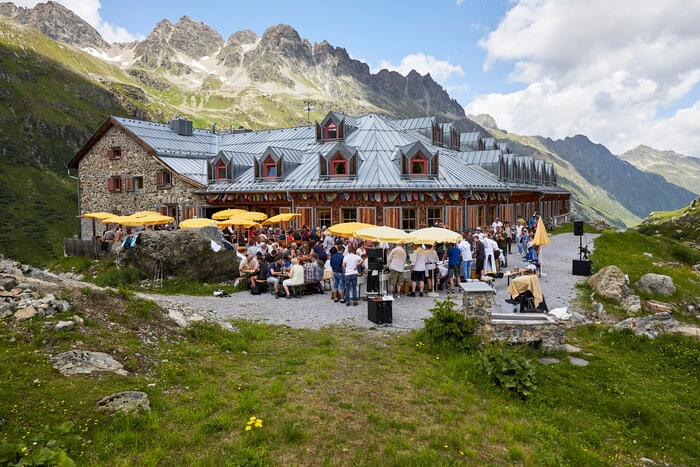
© TVB Paznaun – Ischgl
As I’ve only done the two hikes above, the information on this and the following two hikes is research-based.
The Jamtalhütte lies at a height of 2165 meters and the hike up there takes about three hours and is considered of moderate difficulty.
The food
By: 2-star chef Sven Wassmer from Switzerland
Wassmer’s kitchen is a seasonal one, based on the things he finds in Swiss nature. He forages wild fruits, mushrooms, and herbs, prepares freshly-caught fish and grows his own potatoes – all ingredients which he then combines with products from around the world to create refined dishes.
Everyone I talked to on our trip, agreed that his dish was their favorite.
So what did Wassmer create? A lovely roasted char fillet with sorrel cream, potatoes, and salad. It was light and refined. The kind of dish you’d order on a warm summer evening – or, after a hike, of course :-)
4. To the Heidelberger Hütte in Ischgl
The hike
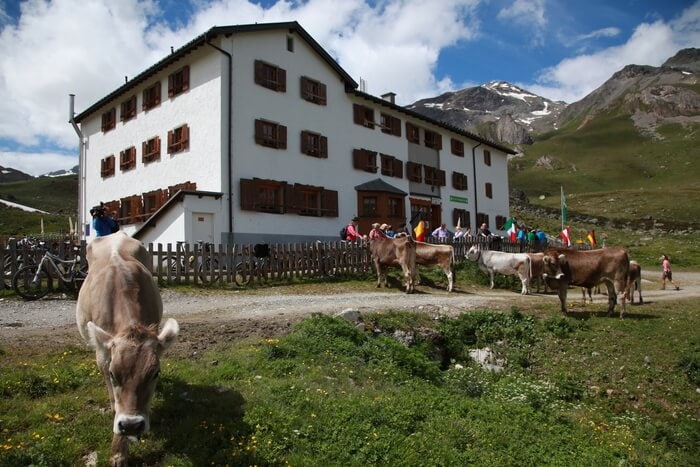
© TVB Paznaun – Ischgl
While the Heidelberger Hütte is located in the Alps of Paznaun, it’s actually also on Swiss soil! It’s right at the border of Austria with Switzerland, allowing you to visit two countries in one day. The hut is located at a height of 2264 meters and there are several ways to reach it.
The food
By: 3-star chef Harald Wohlfahrt from Germany
Wohlfahrt is the only German chef who, as former head-chef of restaurant Schwarzwaldstube in Hotel Traube Tonbach in Baiersbronn-Tonbach, managed to maintain a 3-star Michelin rating a for no less than 25 years. For the Culinary St Jacobs Way, he created a ricotta ravioli with pesto sauce and candied peppers.
5. To the Almstüberl in Kappl
The hike
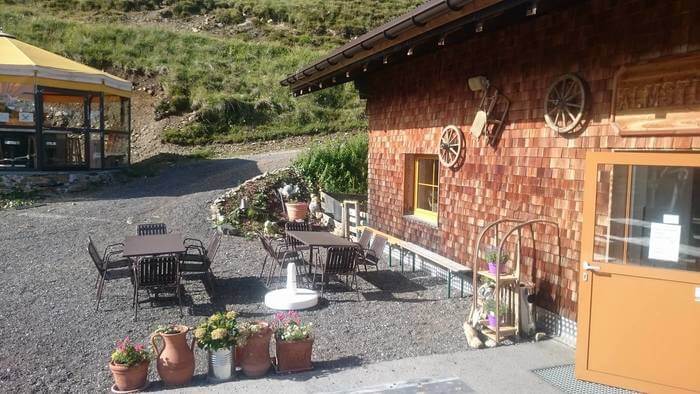
© TVB Paznaun – Ischgl
Take the Diasbahn cable car up to 1800 meters from where it’s a comfortable and short walk to the Almstüberl. You can either take the family-friendly forest path or go for the shorter, but a bit more “traily” hike up. Both routes are considered easy and take about one hour.
The food
By: 2-star chef Michael Wignall from Great Britain
Wignall is known for his surprising combinations which often come from mixing inspiration he gathers while traveling with typically British products. He’s gathered Michelin stars in the different restaurants he was head chef in and is currently planning on opening his own business.
His meatloaf-in-sausage-shape with vegetables and turnip kimchi was my second favorite dish – and that means something, coming from someone who’s not a sausage fan. (Hold the jokes.)
Rather bike than hike?
That’s possible! All huts can easily be reached by normal or electric mountain bike. I’ve had my first go at electric mountain biking in Zillertal earlier this year and can highly recommend it. You get the same kind of movement without dying on the way up :-D
If you don’t have your own bike with you, or you’d rather try an e-mountain bike than the one you have, you can rent one in Galtür, Ischgl, Kappl of See.
Silvretta Card All Inclusive
If you book at least one night in Paznaun-Ischgl, you can get a free Silvretta Card All Inclusive. It offers free use of cable cars and chairlifts in the region, free entry to pools and much more.
Click here for more information.
What to pack for the Culinary St Jacobs Way
The Culinary St Jacobs Way consists of moderate hikes but still, there are some things you should definitely pack to hike it in comfort.
1. Good hiking boots
While the paths are never super difficult to hike, they can be rocky, uneven and – if it’s rained – slippery. I wore my new Salomon Quest 4D 3 GTX® hiking boots and they were perfect for this trip.
Salomon had sent them to me to try out only right before I left for Austria so I didn’t have the time to walk them in and yet I didn’t get any blisters or sore feet in any way. I’ll be testing them on next hikes as well but, needless to say, they’ve impressed me.
They’re lighter than the older hiking boots that I have, have a good grip and are flexible too. The only thing that disappointed me a bit was that I still got sweaty feet in them, despite the Ortholite (highly breathable, moisture-managing) and Gore-Tex technology they’re equipped with.
2. Sunscreen
This might go without saying but still, we had people on our hike who got a sunburn because they’d underestimated the power of the sun high up in the mountains. If you burn easily, make sure to put on some sun screen during the hike as well and not just before it.
3. Quick-dry layers
I highly recommend wearing layers for this hike. I personally get warm very quickly when I get into a physical activity and so I usually just hike in a t-shirt but even if that goes for you too, you’ll need your layers later on when you reach the hut.
Just as the sun is stronger at a high altitude, the wind is colder and the temperatures are often lower than down in the valley. Add to that you’re body will cool down after the hike, forming a lovely little layer of cold, dried up sweat, and you’ll want that extra layer or two.
The best way to go about is it to actually pack a dry base layer (top or t-shirt) so that you can immediately get out of your sweaty one when you reach the hut and change. If you don’t feel like lugging an extra t-shirt around, make sure you’re wearing something made of quick-dry technology so that you don’t keep wearing a sweaty-feeling shirt all through lunch.
You can also always take your bottom layer off during lunch and then put it back on to hike down again.
4. Water
This is an obvious one but it’s so important that I don’t want to leave it out. Bring water! A two-hour hike might not seem long – and it isn’t – but it’s way more intense to hike up for two hours than to walk on flat ground for two hours so make sure to take a regular sip.
A hiking guide once told me you should drink water before you get thirsty.
I always bring a refillable water bottle on my travels. It’s not only good for the environment but also keeps your water tastier for longer.
5. Proper hiking trousers or leggings
These aren’t an absolute must but I wish I’d had them during the hike. While I do have quick-dry shirts, I don’t yet have proper hiking trousers and if you’re constantly going up, it’s really much more pleasant to do so in trousers that are light, stretchy and breathable.
I’ve seen several people hike in leggings too and while I’ve done that before and can confirm that it’s comfortable, I prefer wearing trousers with pockets for hikes so that I can tuck away my phone and a tissue but still keep them handy.
6. A decent daypack
You’ll need a backpack for your water, layers, paper tissues, sunscreen etc. Any backpack will do, but to be truly comfortable, I recommend getting a backpack that’s designed to take on hikes, like the Osprey Hikelite 18L.
I got this backpack to try from Osprey Europe about a month ago and had first taken it on a weekend away to Texel in the Netherlands. When I used it there, the suspended mesh backpanel first bothered me a bit as it made a sound when it moved along my back, but I fixed that issues by adjusting the straps a bit when I was in Austria and happily hiked with it there for two days.
When it was fixed, the back panel was actually a great plus. It keeps the actual solid back of the backpack from leaning against your back, creating a space of air in between so that your back doesn’t get as sweaty – and neither does the back of your backpack.
The Hikelite comes with a rain cover, has two side pockets to keep water bottles and has an inner back pocket for your laptop or tablet. I was happy that it just fits my 14′ laptop while it’s its case, so I can also use it as a carry-on backpack.
You can attach walking poles to the upper compression strap if you want the backpack also has a removable webbing hipbelt and an adjustable sternum strap. They’re meant to help keep the backpack in place but I haven’t needed them as I found that the sturdy mesh back panel already keeps the backpack from moving – if you properly tighten the shoulder straps, that is :-)
The only downside to this backpack for me is that the front pocket is rather small. It’s about the size of two tennis balls and “hangs” inside the main pocket, which also means it takes up space there. I would have preferred if it had been somewhat deeper and laying on top of the main pocket, instead of hanging inside of it.
Where to stay in Ischgl
I spent two nights at Gourmet Hotel Yscla in Ischgl. Its Stüva restaurant is run by the young head chef Benjamin Parth who is one of Austria’s most renowned chefs with 3 chef hats in Gault & Millau. The hotel also has a small wellness area and lies just a two-minute walk from the Silvretta cable car.
In winter, the ski run ends right next to the hotel.
WiFi is free here and the large rooms are equipped with a flat screen tv and separate bathroom with toiletries included. Mine also had a desk area and a walk-in closet. Have a look:
Want to stay at the Yscla Gourmet Hotel too? Click here for more reviews, prices, and availability.
Getting to Ischgl
We flew from Brussels to Zurich Airport and then took a shuttle from Zurich to Ischgl, straight to our hotel. You can also travel to Ischgl by flying into Munich Airport and then taking a shuttle from there.
Check Skyscanner for an overview of flight options..
We were traveling in a group, but ideally, you’ll have a car to get around the Paznaun-Ischl region. You can either drive to Zillertal or rent one once you get to Zurich or Munich Airport. RentalCars.com compares a ton of rental car companies so you can get the best deal.
Pin for later
I as a guest of the Austrian National Tourism Board during my stay in Ischgl. They invited me to attend the opening of the 10th Culinary St Jacobs Way. As always when entering partnerships like this, what I wrote and how I wrote it was entirely up to me.

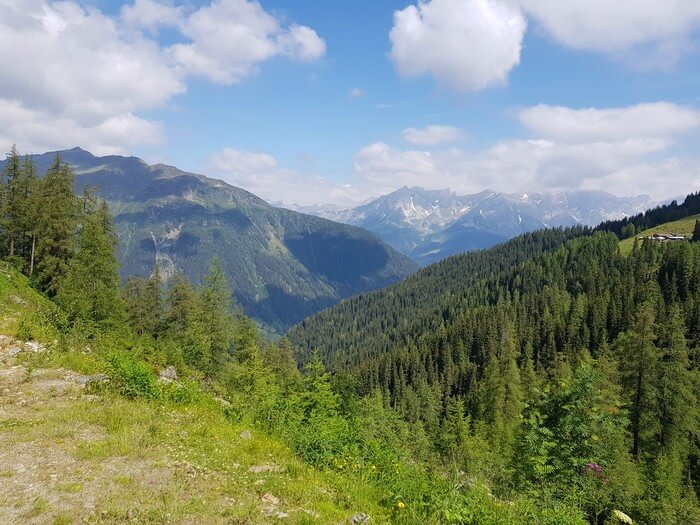
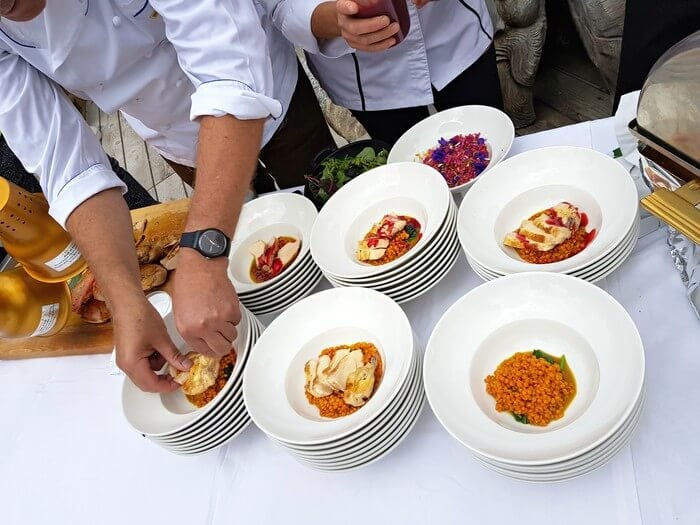
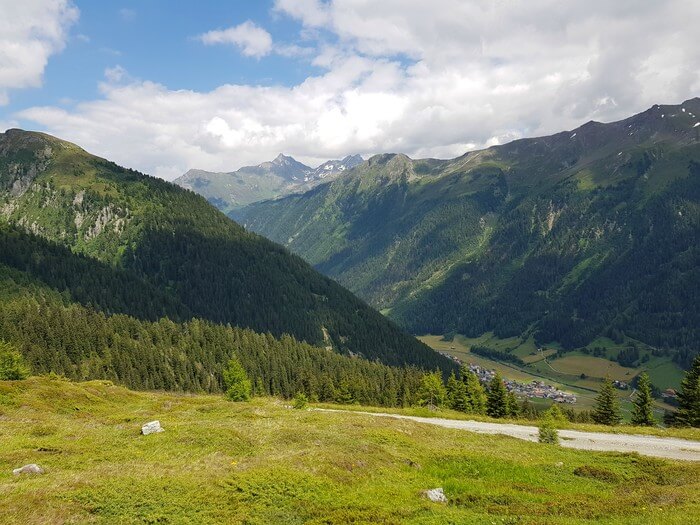
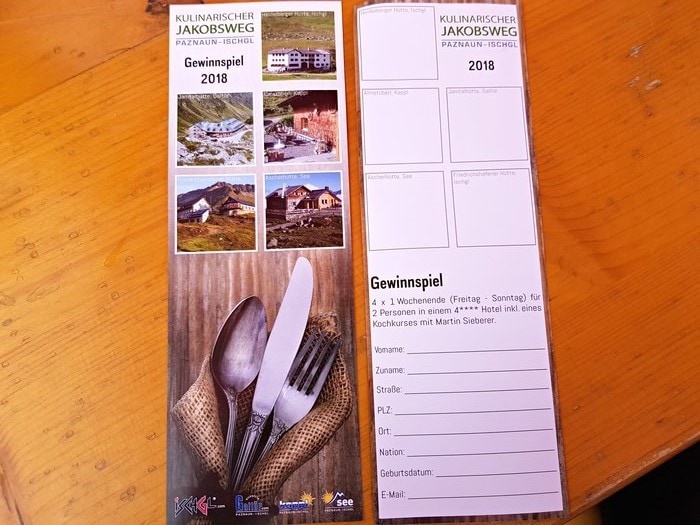
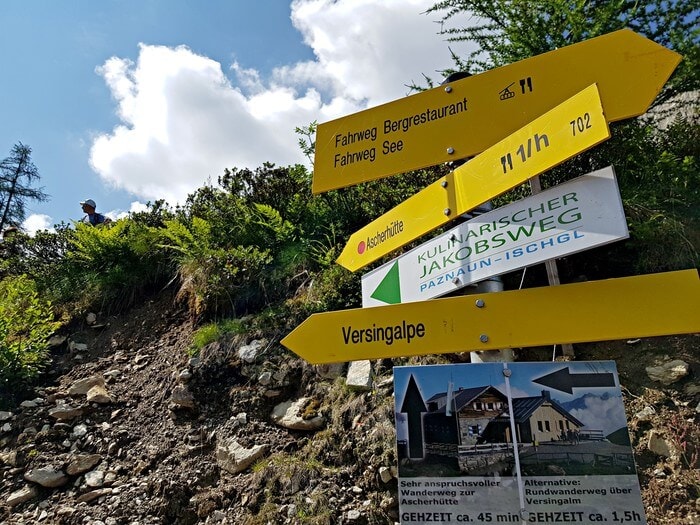
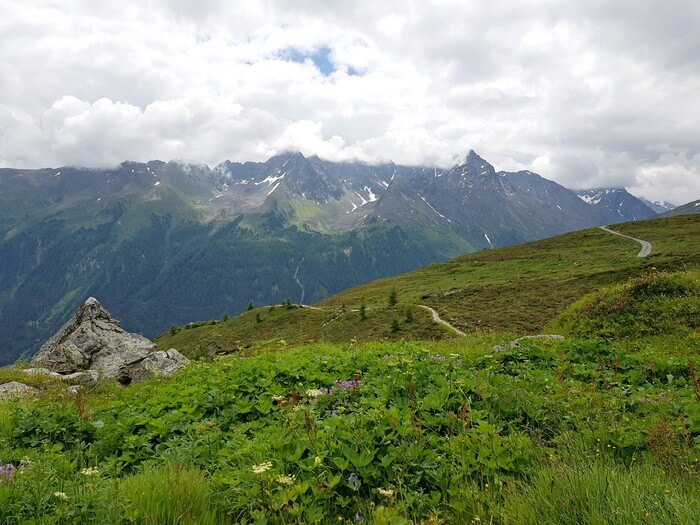
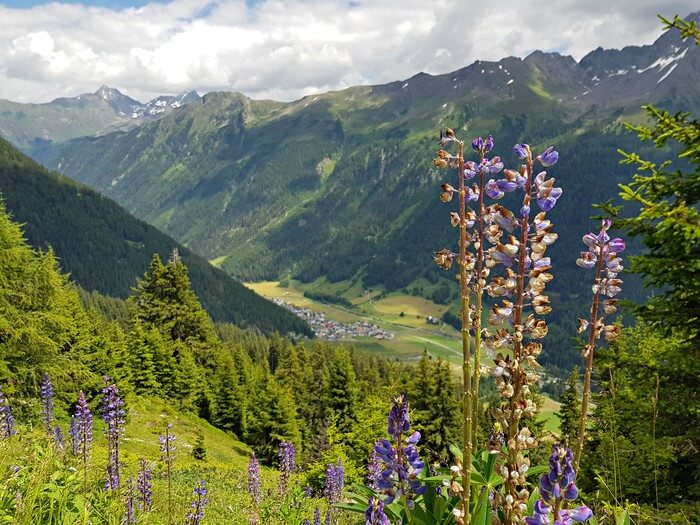
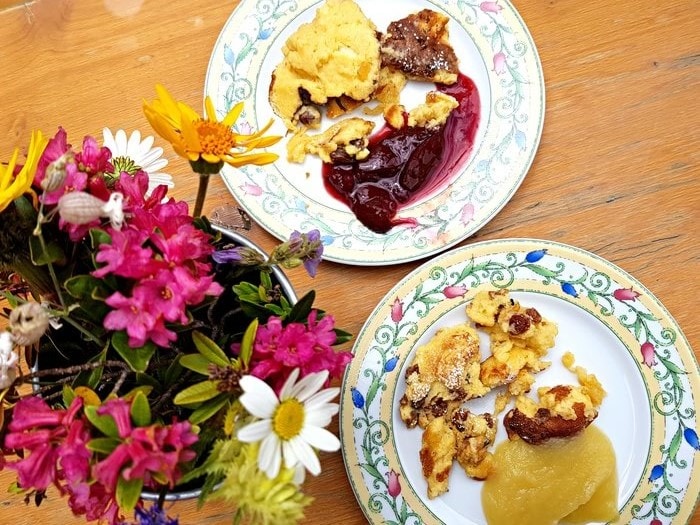
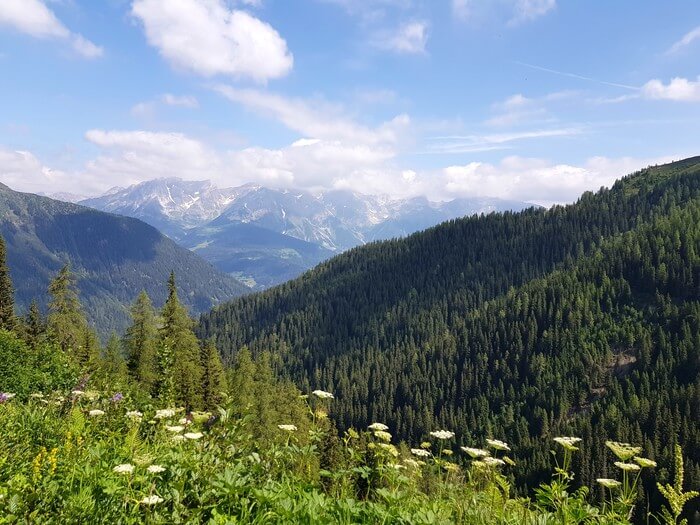
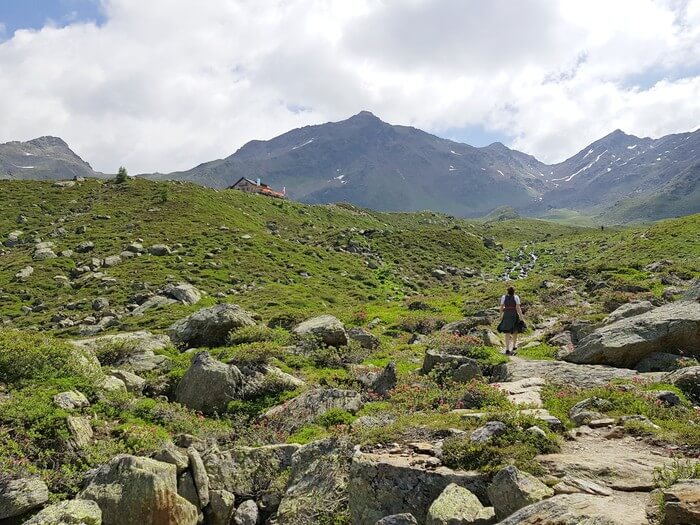
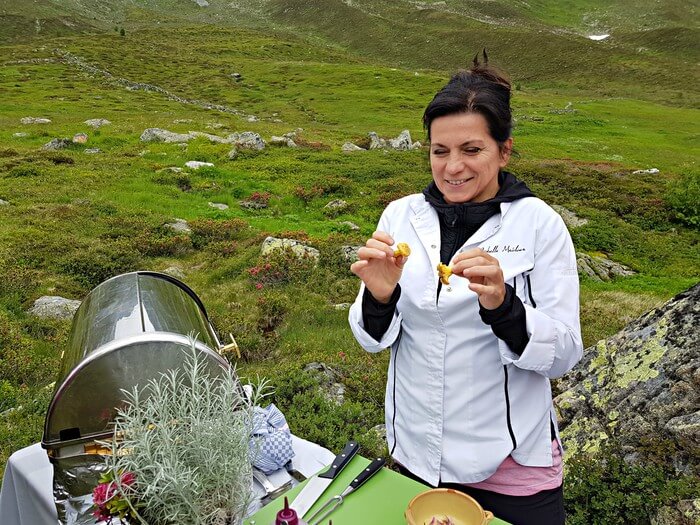
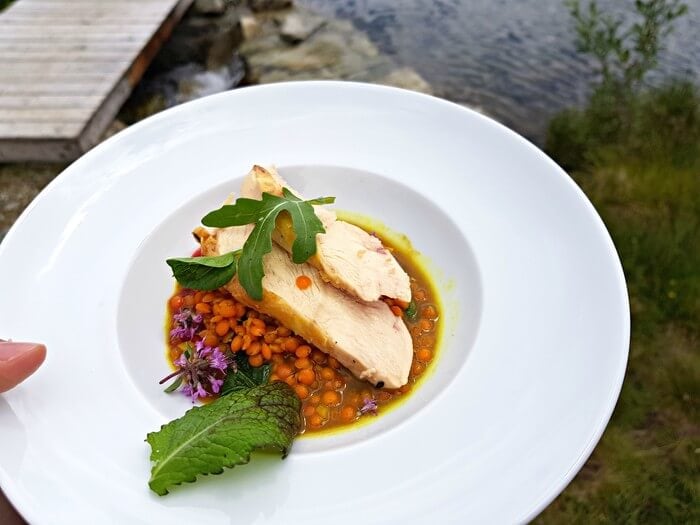
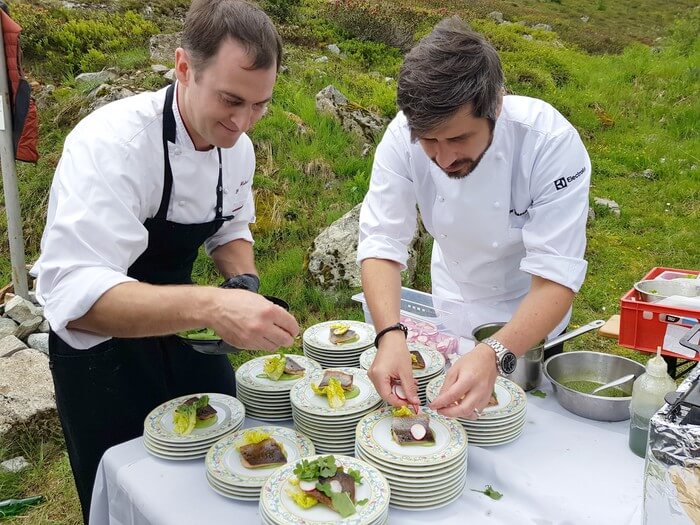
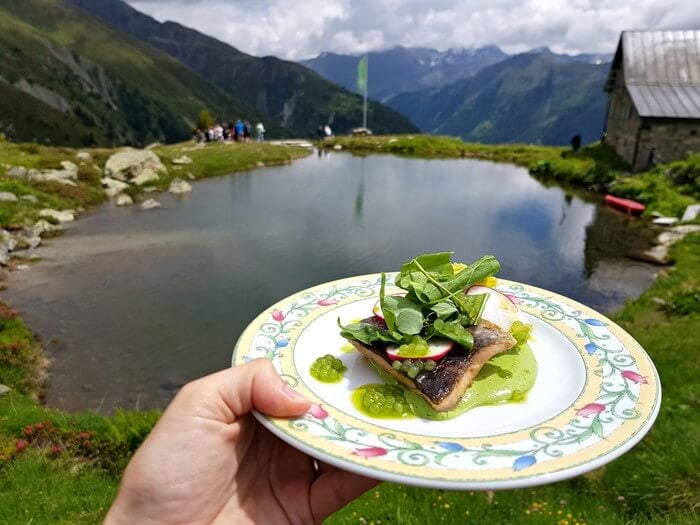
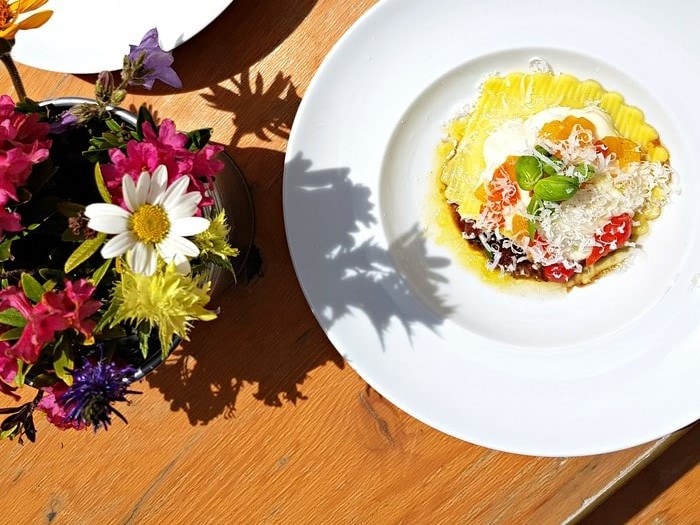
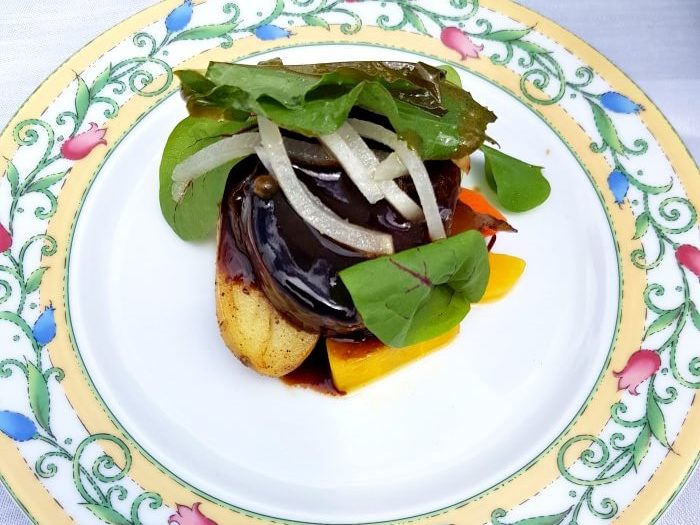
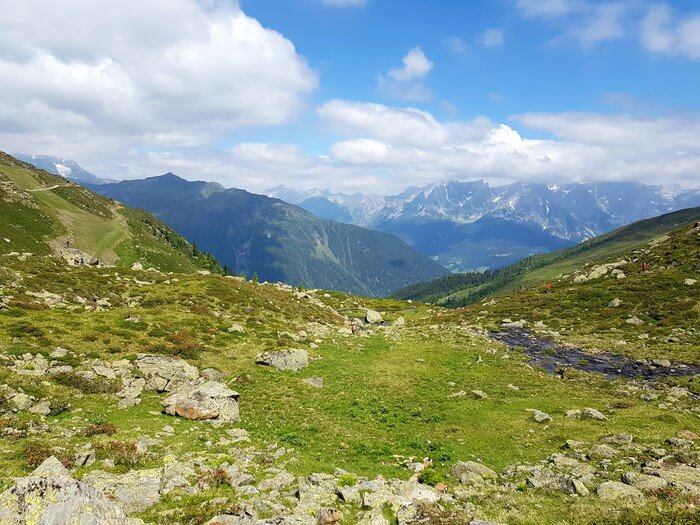
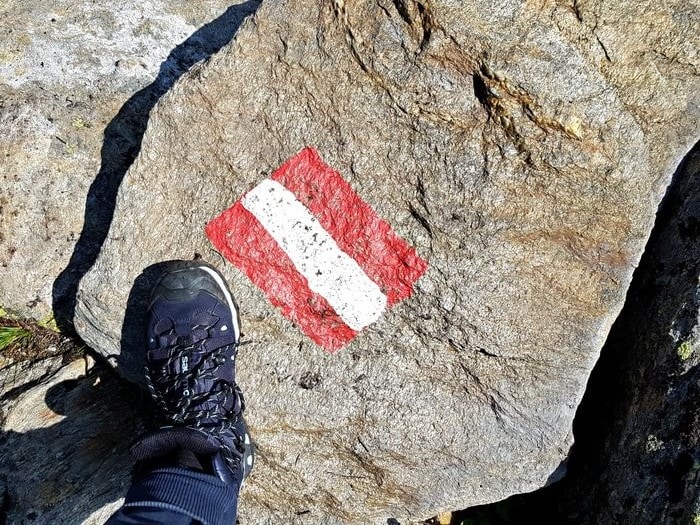

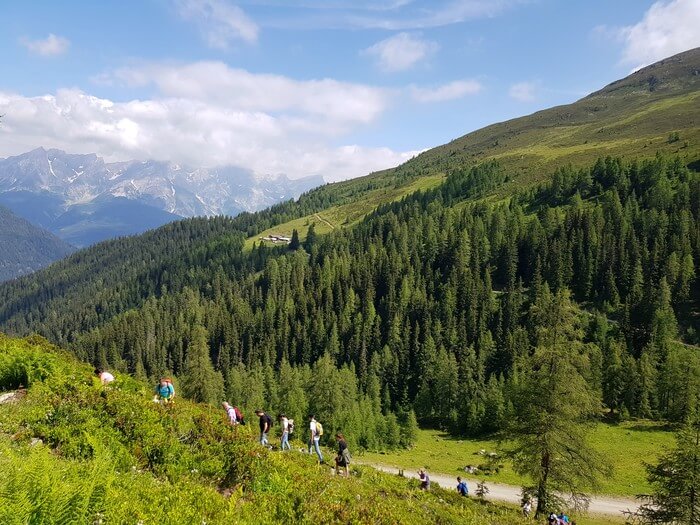
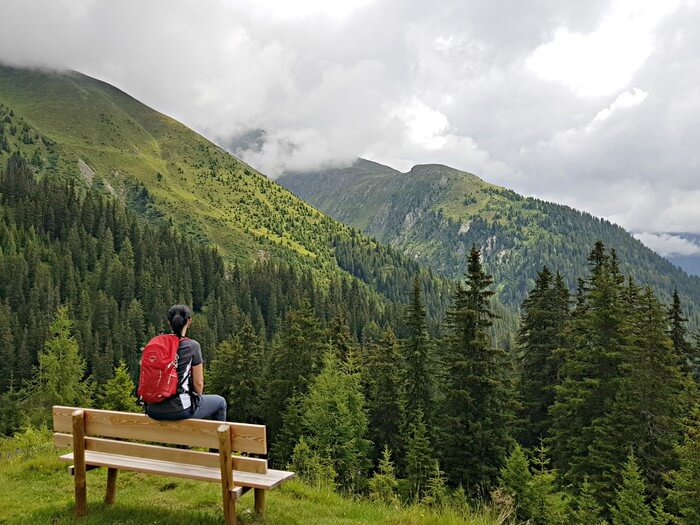
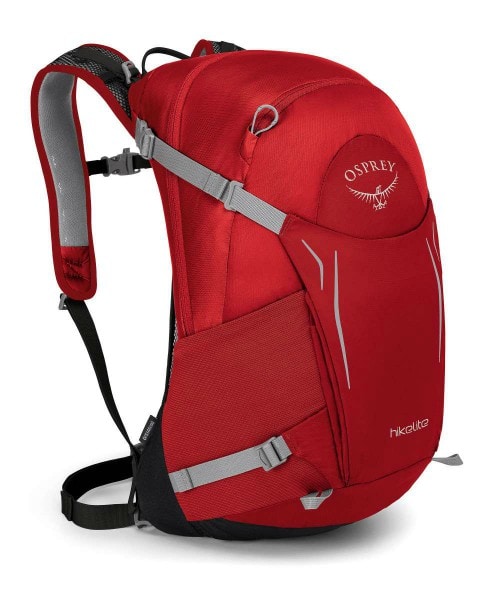
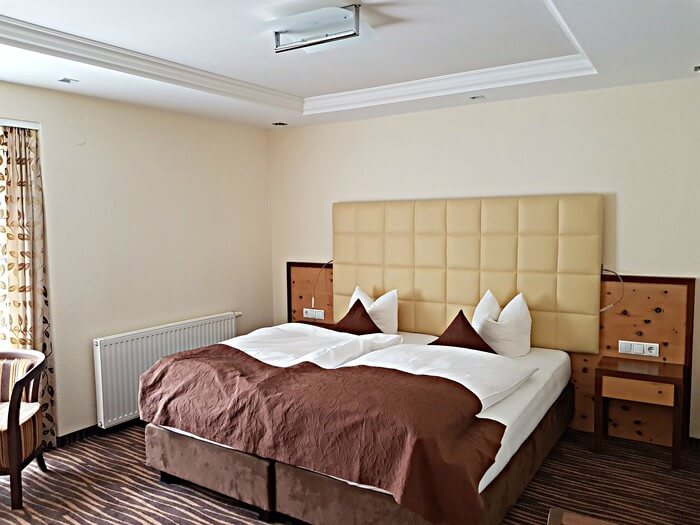
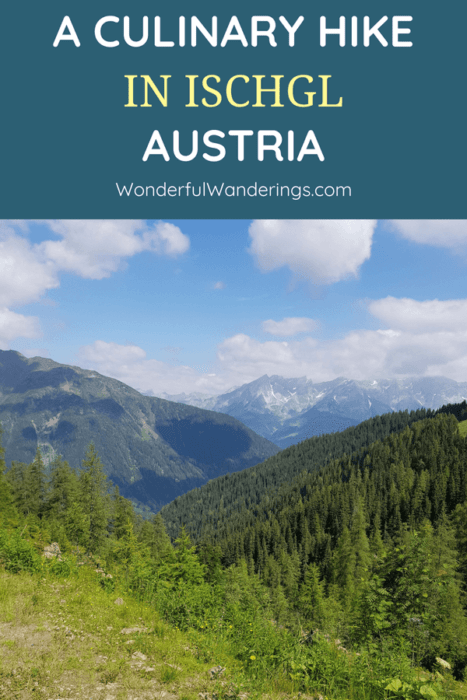
reem zeyad says
Hi Sofia, I enjoy reading about Australia hiking experience at the Culinary St Jacobs Way and 5 different ways for hiking , Really you select great destination and great experience to blog on and thanks for letting us discover the beauty of such great destination, One more talent I find in you which is photo shooting and selections
Sofie says
Thanks so much, Reem, I really appreciate that!
This post is about Austria, though. Not Australia ;-)